Guides To Buy
Guides To Buy
Choosing An HeadAmp
It’s that simple
Okay, so you want to get better sound, and you need an amp. The problem is, we have a whole bunch of them! And there are tubes and solid state, and high powered options to choose from. So, how do you pick the best amp for your headphones? Well, let’s boil it down by model:
Magni+ or Heretic, When we say “this may be the only headphone amp you ever need,” we really mean it. Magni will drive pretty much any hard-to-drive headphone out there, with 2.4 watts of power into 32 ohms, while being dead-silent with sensitive in-ear monitors.
Choose Magni for:
Most bang for the buck
Most headphones, from IEMs to planars
A complete desktop system with preamp outputs
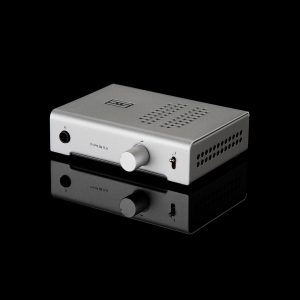
Vali 2+, Want to get a taste of great tube sound, without the wallet-exploding price? Vali’s for you. It’s a very serious tube amp, with a class-leading power supply, low noise for efficient headphones, and high power output for hard-to-drive headphones.
Choose Vali for:
Great tube sound, at a very low cost
The ability to “tube roll” and change the sound
Most headphones, from IEMs to planars
See Vali 2+
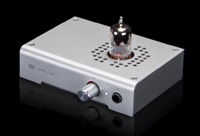
Magnius, Want to go balanced? Want amazing measurements? Want tons of power? Want something made in the USA by happy people getting paid well in California, at much, much less (yes, LESS) than other products made overseas? Then you want Magnius.
Choose Magnius for:
Balanced and single-ended headphone outputs
High power, high versatility
Most headphones, from IEMs to planners
See Magnius

Valhalla 2, Now we get 100% tubes, and more arguments about whether tubes sound better or not. We don’t get into those arguments. We will say that tubes sound different. Some people like tubes, and some people don’t. Valhalla 2 is a great tube amp that works very well with a wide range of headphones.
Choose Valhalla for:
100% all-triode gain stage
High-impedance headphones
Some high-efficiency, low-ish impedance headphones
See Valhalla 2

Lyr + The most-advanced desktop-sized amp we’ve ever made, with relay volume, microprocessor management, remote control, and the ability to run with or without tube. Yes, that’s right…feel free to play with tubes, but never worry about them ever again!
Choose Lyr for:
Unique Fusion Topology tube or no-tube gain stage
Perfectly matched relay volume, microprocessor protection, and remote control
Plenty of power for any headphone
See Lyr+
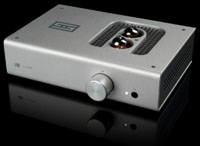
Ragnarok. Ragnarok is a do-all integrated amp for headphones and speakers, providing the ultimate end-gameperformance for both. Compare to any amp on the market, at any price. With 5 inputs, balanced and single-ended headphone outputs, balanced and single-ended preamp outputs, and speaker terminals, it’s one amp that is suitable for pretty much anything.
Choose Ragnarok for:
Ultimate detail, resolution, and accuracy
Ultimate power and headroom for headphones and for many speakers
Balanced and single-ended headphones and speakers
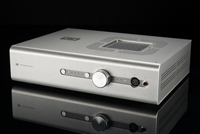
Choosing a DAC
Bits is bits, right?
Okay, so you want a DAC. Or do you? Some people say you don’t need one. Well, if you trust the overworked computer or smartphone engineer to choose the right $0.25 D/A for their platform swimming in gigahertz noise, sure. So yeah, you need an external DAC for top sound. But which one? Let’s boil it down by model:
Modi + Modi+ is the three-input, do-all DAC that may be all the DAC you ever need—for an insanely low price tag.
Choose Modi for:
Most bang for the buck
Easy setup and great flexibility
Perfect stack with Magni, Loki Mini, Vali
See Modi+
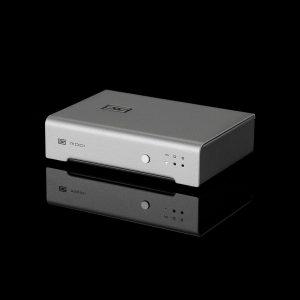
Modius E is a 4-input, balanced-output, Unison USB™ equipped DAC that delivers extremely high value and performance for virtually any audio system.
Choose Modius E for:
Any balanced or single-ended system for either speakers or headphone
Perfect form factor match to Asgard, Valhalla, Jotunheim, Lyr, and Saga
Super high value, excellent sound and measurements
See Modius
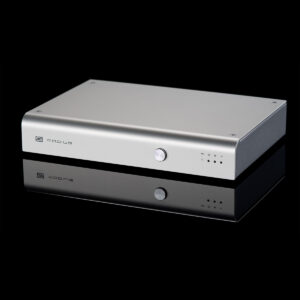
Bifrost 2, Where Modi and Modius are about bang for the buck, Bifrost steps up the game, adding hardware-balanced output, remote control, NOS mode, our own Unison USB™, and our Autonomy™ platform. Autonomy means that both hardware and firmware upgrades can be done by you—no return to the factory necessary!
Choose Bifrost 2/64 for:
True Multibit performance with Unison USB input
Remote control and NOS mode
Easy upgradability with Autonomy platform
See Bifrost
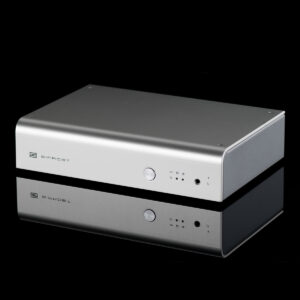
Gungnir Multibit, offers the same digital filter and similar DACs as Yggdrasil, as well as sophisticated bit-perfect clock regeneration.
Choose Gungnir Multibit for:
Excellent performance in both balanced and single-ended systems
Multiple inputs: optical, coaxial, BNC, and USB
Analog and USB upgradable
See Gungnir
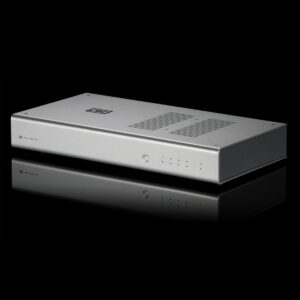
Yggdrasil+ is a complete re-thinking of what an “end game” DAC should be. As a true multi-bit DAC with a unique digital filter algorithm using D/A converters not used in any other product, Yggdrasil+ is also completely modular and upgradable for future needs.
Choose Yggdrasil for:
Ultimate performance in both balanced and single-ended systems
Remote control, NOS mode, 5 inputs
Completely modular, upgradable architecture
See Yggdrasil
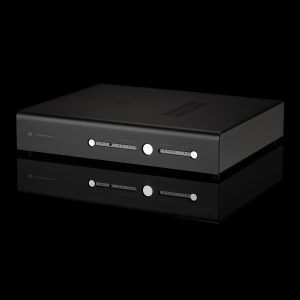
Choosing a DAC/AMP
Fulla E. Fulla plugs into virtually any computer and drives most headphones with ease. It also provides a microphone input, so it is perfect for gaming or home office use.
Choose Fulla E for:
Home office or gaming
Most bang for the buck
Most headphones
See Fulla
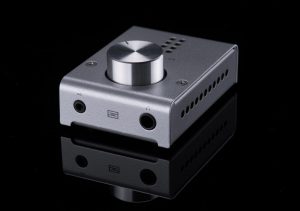
Hel 2E ups the game with much higher power output than Fulla E. It also provides automatic UAC1/2 switching for console compatibility, optical input for monitor and console compatibility, and stereo microphone input, so it is also an ideal choice for for gaming or home office use.
Choose Hel for:
Home office or gaming
Much higher power, optical input, gain switching
Most headphones
See Hel
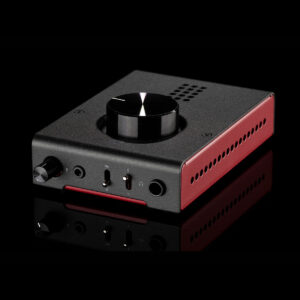
Asgard 3 is an insanely affordable, configurable amp or amp/DAC that works with pretty much any headphone. With 500mW of Class A bias and 3500mW RMS power output, it delivers great sound, and tons of power.
Choose Asgard for:
Excellent performance for virtually any headphone
Single-box desktop solution with an added DAC card
No obsolescence—modular and upgradable for the future
See Asgard 3
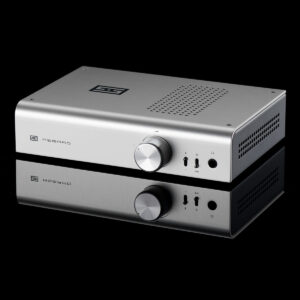
Jotunheim 2 is a fully balanced amp that works perfectly with pretty much any headphone—balanced, single-ended, IEM, planar, whatever. Plus, it can be customized with an ES9028 DAC, or MM phono preamp.
Choose Jotunheim 2 for:
End-game performance for both balanced and single-ended sources and headphones
Tons of power and a very low noise floor, ideal for any headphone
No obsolescence—modular and upgradable for the future
See Jotunheim
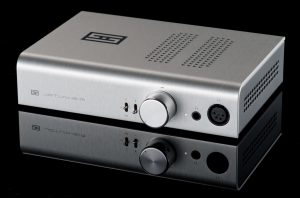
Stack. If you’re looking for something different—tubes, multibit DACs, etc, you can also create your own system by choosing a separate amp and DAC from our broad line and stacking them on top of each other. Fair warning: at the top end, the stacks are big and not exactly desk-friendly!
Choose a Stack for:
Ultimate in flexibility to mix and match
Advanced needs, such as tube gain or multibit DACs
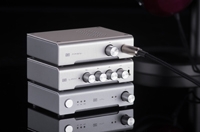
Choosing a AMP & Preamps
Saga S and Saga+ Choose Saga S for an affordable solid state preamp, and Saga+ for an affordable tube preamp. Both offer a perfectly balanced 64-step relay volume and passive output option, as well as a remote control.
Choose Saga for:
Most preamp bang for the buck (maybe on the planet)
Use with a single Vidar or Aegir for a versatile, inexpensive system
Integration with home theater via true bypass capability
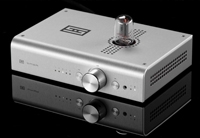
Freya S and Freya+ Both are end-game preamps, without the mortgage-worthy price. Both offer perfectly balanced 128-step relay volume, balanced inputs and outputs, and remote control. Freya S uses our proprietary Nexus™ fully differential solid state gain stage, while Freya+ offers a true 4-tube differential gain stage, as well as passive and differential buffer modes.
Choose Freya for:
Ultimate flexibility in terms of inputs, outputs, and modes
Use with 2 Vidars or Aegir in mono configuration for higher power output
Integration with home theater via true bypass capability
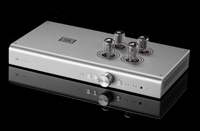
Vidar Here’s the one amp you need–capable of driving virtually any pair of speakers out there with power and authority, and without the “Class D” and “switching supply” compromises you usually see at this price.
Choose Vidar for:
Exceptional power and control
Complete safety with intelligent protection
Ability to run in mono at 400W into 8 ohms
See Vidar
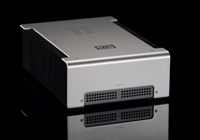
Aegir Depending on your point of view, this is either a lower-power Vidar at a higher price, or a higher-quality, power-limited amp using our unique Continuity™ constant-transconductance output stage. Both views are valid.
Choose Aegir for:
Excellent sonics with efficient speakers
Complete safety with intelligent protection
Ability to run in mono at 80W into 8 ohms
See Aegir
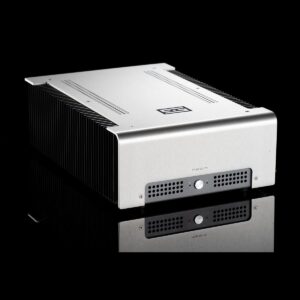
Tyr This is our all-out, totally-nuts, Nexus and Continuity™ choke-input monoblock power amplifier. At 50 lbs each, and 2 required for stereo, Tyr is the top of our amp line.
Choose Tyr for:
Ultimate sonic performance for virtually any speaker
High power, 200W into 8 ohms and 350W into 4 ohms
Complete safety with intelligent protection
See Tyr
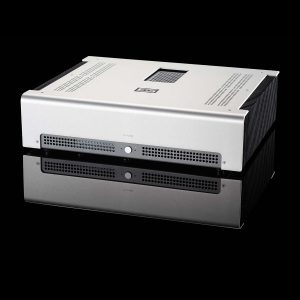
Saga + and Vidar In our opinion, this is where everyone should start. Combine Saga+ and Vidar, and you have an amazingly capable, transparent, no-compromise system for just over a grand. Add any of our DACs for a complete “stack.”
Choose Saga+ and Vidar for:
An affordable, no-compromise, remote-control speaker-driving system
The highest value to performance ratio
Perfect match to Bifrost 2 in size
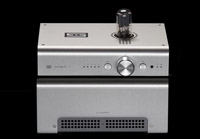
Freya+ and 2 Vidars Now you’re getting into serious capability, with Freya+ and 2 Vidars run in mono, for 400W per channel. This system is serious overkill, but sometimes there’s no dose like an overdose!
Choose Freya+ and 2 Vidars for:
Exceptional power, headroom, and flexibility
Super high power for your speakers
Perfect match to Gungnir in size, Yggdrasil in width
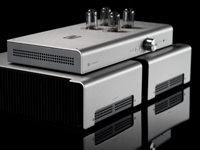
Ragnarok Want to simplify your life? Ragnarok 2 combines both preamp and amp into a single box—and you can even order it with a built-in phono preamp and DAC for all of your sources. It’s the one box you need to do pretty much anything.
Choose Ragnarok 2 for:
Single-box simplicity for all your sources
Balanced and single-ended inputs and outputs
Speaker and headphone driving capability
See Ragnarok
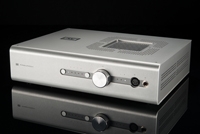
Getting Connected
How to connect our gear to most common devices
Okay, so you’re new to this whole game. You don’t know an LOD from a 30-pin, or what a USB A-B cable is. Where the heck do you start? Well, here’s a brief guide to how to connect our stuff to some common sources and systems, together with some links to cables you might need.
Connecting to a Computer
Analog: You can connect a headphone amp to your computer via the headphone or line-out jack. Most computers have a 1/8″ stereo jack, and our gear uses RCA inputs, So you’ll need a cable like this one:
Digital: You can connect our DACs to Windows, Mac, many Linux computers, and some Chromebooks via USB, optical, or coaxial digital output, depending on what the computer has. USB is the most universal. To use USB, you’ll need a USB A-B cable, like this:
Most Apple computers also have optical digital output via the headphone jack. To use it, you’ll need a cable like this:
1/8″ to Standard Toslink Cable
Connecting to an iPod/iPhone/iPad
Analog: You can connect a headphone amp via the headphone jack. iPhones and iPods use a 1/8″ stereo jack, and our gear uses RCA inputs, so you’ll need a cable like this one:
Digital: If you have an older iPhone, iPod, or iPad with the 30-pin connector (the 1″ wide one, not the new Lightning connector), you can connect to our optical-input DACs with a digital out dock, like a Pure i20.
30-Pin connector and iPad: If you have an iPad with the 30-pin connector, you can connect via USB with the Apple 30-pin Camera Connection Kit, together with a powered hub to avoid the “this device draws too much power” error. You’ll also need a USB cable.
Lightning connector: if you have an iPhone running iOS7 or iPad running iOS6 or iOS7 with the new Lightning connector, you can use the Lightning to USB Adapter from Apple, together with a powered hub to avoid the “this device draws too much power” error. You’ll also need a USB cable.
Apple 30-pin Camera Connection Kit
Apple Lightning to USB Adapter
Connecting to an Android Phone or Tablet
Analog: You can connect a headphone amp via the headphone jack. iPads use a 1/8″ stereo jack, and our gear uses RCA inputs, So you’ll need a cable like this one:
Digital: You can connect our DACs to many Android devices (4.0 and up) using a USB On The Go cable and output digital music via the Audio Player Pro app, with USB Tweak 1 applied. Some Android devices will need to be connected through a USB powered hub, since they cannot supply enough power to run the DAC.
Audio Player Pro App (this is a paid app, it costs about $10)
Powered Hub (for some systems)
Connecting a DAC to an Amp, Preamp, AV Preamp, or Receiver
Most equipment uses RCA cables. You’ll need a stereo pair of RCA cables—we sell really short ones (PYST) for connecting our own gear together when it’s stacked—or you can buy all kinds of lengths at the second length.
Connecting a Preamp to a Headphone Amp
Many preamps still have what they call a “tape out,” which bypasses the internal volume control of the preamp. This is where you’d want to connect a headphone amp. All you need is a pair of RCA cables, like these:
If your preamp does not have a clearly labeled “tape out,” contact the manufacturer and ask them if they have an output that bypasses the volume control.
Connecting a Receiver or AV Preamp to a Headphone Amp
Many receivers and AV preamps have what they call a “stereo mix” output. This is where you’d connect a headphone amp, with RCA cables like this:
If your receiver or AV preamp does not have a clearly labeled stereo output, contact the manufacturer for their recommendation as to where to connect a headphone amp.
Connecting to More Than One Device
Let’s say you have one of our DACs and you want to connect it to both your headphone amp and a set of powered speakers on your desk (or any other group of two different products, like a headphone amp and a receiver, etc. To do this, you’ll need a set of RCA Y-Cables, like this:



